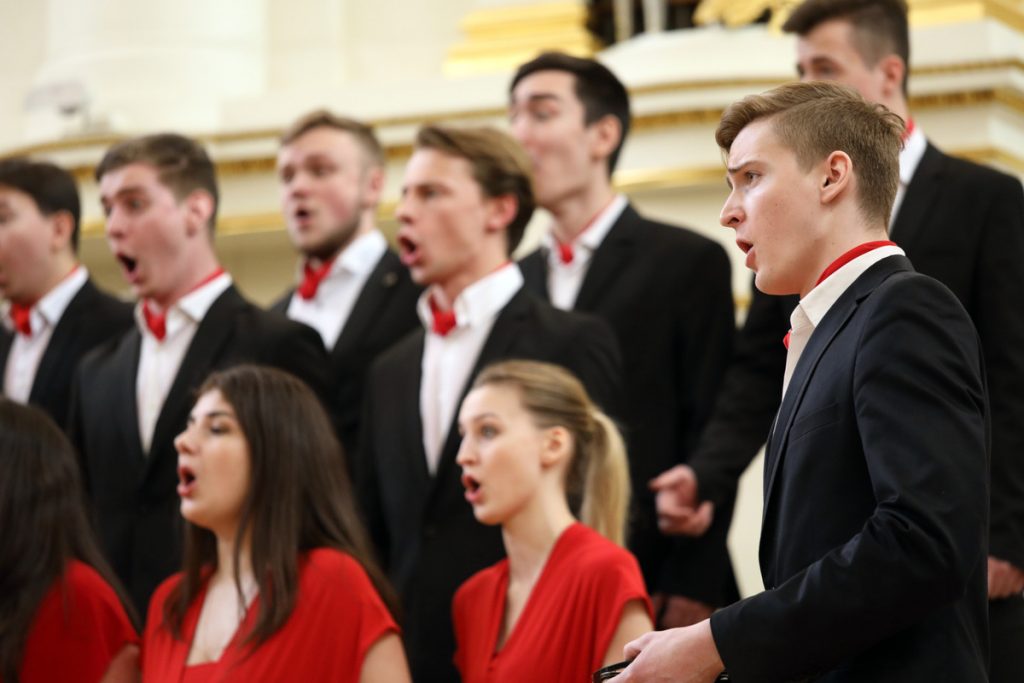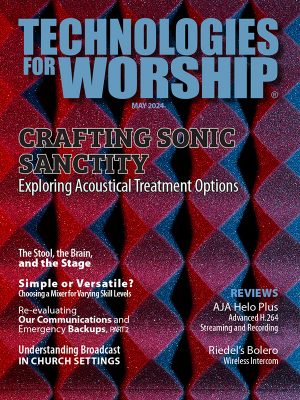
By Collin Makariak
Of all instruments available to us composers, there is perhaps none more personal and varied than the voice. As it is the only true means we have to convey text through music, writing for voice is especially impactful for someone looking to write music in a worship setting. The choir has long been a staple of liturgical ensemble writing and for good reason: while one voice is intimate, a much larger grouping of voices can bring majesty and power to religious text that is hard to match.
In this article, we are going to briefly explore choral writing, going over helpful tips, advice, and considerations. To get the most out of this how-to, it is important you have an understanding of the fundamentals of triadic harmony.
When writing for choir, your first step is going to be to choose a text. There are countless scriptures, poems and more to get you started. Think of the message you want your piece to convey to your audience. Perhaps there is a biblical story you are hoping to share. Maybe you wish to write part of or even an entire Catholic Mass. Whatever text you choose should resonate with you strongly on a personal level. I can not overstate how important it is that the words you are using give you inspiration. This inspiration is going to give you the desire needed to put out your best work. Once you have chosen a text you are then ready to start planning out a rough idea for your melody.
The Melody
The melody is perhaps the most important thing to get right with your composition. An effective melody gives your music emotional impact and memorability. A truly great melody can make an otherwise well written piece of music a masterpiece. It can also make an otherwise bland and uninspired creation salvageable. Remember that we are using text, so as you are exploring ideas for your melody, make sure to keep the text in your mind. Your melody should be singable and should flow well with the text you have chosen. A choir and its director are not going to be impressed if your piece is overly difficult and poorly thought out.
On a technical level, there are certain rules we can use to make sure we come up with a strong melody. Develop a short motif. It can be anywhere from a couple of notes to a bar or two long to serve as the backbone of your music.
For centuries composers have been writing music using short melodic or rhythmic ideas. These ideas are repeated throughout the piece and developed to give music structure and purpose. Try changing a rhythm slightly or flipping some intervals in your melody to get some very basic transformations of your motif.
Melodies commonly use stepwise motion often. Leaps are perfectly acceptable but should be used sparingly unless outlining a chord. A leap should often be preceded and followed by stepwise motion in the opposite direction, so if my melody has a leap down, I would like to approach and leave it via ascending stepwise motion most of the time. Notes that do not belong in the key you are writing in can provide your music with sophistication but be prepared to contextualize these notes harmonically.
Don’t Forget the Harmony
An often-overlooked element of music writing is harmony. Harmony is a key driving force needed to give your music a sense of direction and movement. In tonal music, we always want to progress away from and then back towards our tonic chord. Some basic progressions we have at our disposal are the I-IV-V-I chord progression, the I-VI-II-V-I chord progression and more. These progressions use exclusively triads that are found in the key we are writing in, but if you want your music to sound more original you can use “borrowed chords” from other modes and keys. The key to having a pleasing harmony is to ensure we are using smooth voice leading. Try to have as little movement as possible in each individual part from one chord to the next. Another very basic rule to follow would be to try your best to double either the root or fifth of the chord you are presenting.
Create Musical Texture
The most skilled choral composers in the world are always thinking about the overall sound and texture of the piece they are writing. Remember that even though in standard chorale writing we have four voices to work with, we aren’t required to use all of them at every time. Some moments in your music might work best when the Sopranos and Tenors are singing while the Bass and Alto are resting. Sometimes you will only want either the men or the women to sing depending on various factors. Decide whether your choral piece will include homorhythmic textures or be more free on a part by part basis. Make sure to choose dynamics for your piece and articulations that accentuate key text and provide musical intrigue.
Writing choral music is no small task. Creating something that is singable, harmonically interesting, and has a memorable melody is a hard thing to accomplish. However the results of a well written piece in this medium are almost indescribable. There is nothing out there that brings such a combination of majesty, power, and intimacy as the sound of dozens of voices singing together. There is a reason this type of ensemble music has been dominant in the Church for hundreds of years.
What is…
…a triad?
A triad consists of three notes stacked in consecutive thirds. A triad is also called a chord as well as a harmony.
…Triadic Harmony?
Harmony parts are made by stringing together triads built on different scale degrees. The three most common triads used to harmonize a melody are the tonic, subdominant, and dominant triads: I, IV, and V. In a major key, all three of these will be major triads.
…a song motif?
A motif is a small collection of notes that captures the essence or idea of the piece. Motifs are similar to a musical phrase featured within a song or series of songs, or a composition.
…a stepwise motion?
A stepwise motion is the interval between any two consecutive pitches that is no more than a step. An example would be a major scale as every note is a semitone or a tone above or below the previous note.
…a leap?
A leap is a movement from one note to another in a scale which is greater than a step. A leap is motion by three semitones or more in a mode or in the melodic minor scale. In the harmonic minor scale there is one leap of more than three semitones. In a chromatic scale, a leap is motion by two semitones or more.
…Tonal music?
Tonal music (aka Tonality)is music that has a specific note on which music is the most stable and at rest (the tonic). In general, tonal music works by establishing a tonic, moving away from it, and then returning to it.
…a tonic chord?
A tonic chord is the first chord of a musical piece, which like the triad, is built on the tonic note. This chord is the root of the melody or song and creates the tonal center of the composition. In the C major scale example, the tonic chord would also be C major since it is the first note of the scale.
…homorhythm?
Homorhythm is a type of homophonic texture in which all voices move in an extremely similar or completely unison rhythm. This is most often seen in chorale-like compositions, where the melody and harmonies move together in block chords .
Collin Makariak is a Freelance Composer, Pianist and Music Teacher in Oakville, Ontario. He has a bachelor’s degree in music Composition from Acadia University and Post Grad Education in scoring for stage and screen. He has written music in the classical, Jazz, and Cinematic style and his music has been featured in indie films and other media.


